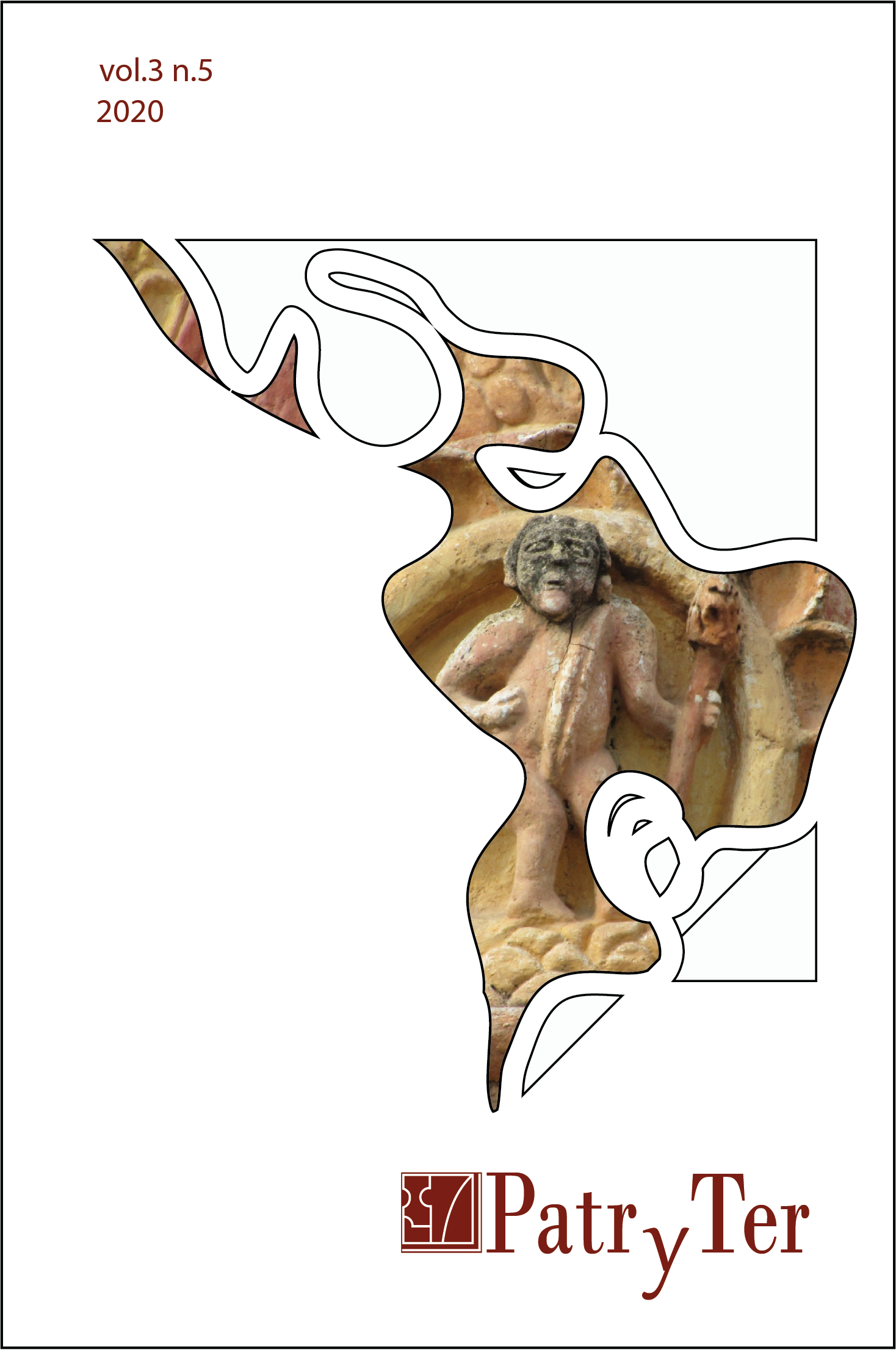The Divine Holy Spirit Feast a tradition in motion
DOI:
https://doi.org/10.26512/patryter.v3i5.26908Keywords:
Urban. popular culture. resistance. Feast of the Divine. Candomblés yard.Abstract
In the State of Maranhão, the Divine Holy Spirit Feast takes place mainly at Candomblé and Tambor de Mina´s yard. The feast that was chosen for analysis is the one performed at Fanti Ashanti House in Sao Luís (MA), whose format has been brought to São Paulo in the migratory process, and that is held annually at the Cachuera Cultural Association, in the district of Perdizes. It aims at understanding about the movement that the Divine Feast makes keeping the tradition, even in other spaces and under new conditions of accomplishment. To this end, the main focus is on the action of the Divine Caixeiras, as well as all on their ceremonials and scenarios. From readings, field researching and collection of oral reports, it is possible to say that the access to several time dimensions (past, present, and future) is triggered in the making of the Feast: the temporality of the past reproaches the linear and accelerated time of the urban, and points to a utopic future, among contradictions. The social and spatial condition that the Feast hosts sacralize the lived space, or space of representation, during the festive days, as well as reverence the original Feast, the one that once took place at Fanti Ashanti House.
Downloads
References
Azevedo, R. P. de. (1962-1963). O Compromisso da Confraria do Espírito Santo de Benavente, Lusitânia Sacra, 6, 7-23. Recuperado de http://hdl.handle.net/10400.14/5053.
Barbosa, M. (2006). Umas mulheres que dão no couro. São Paulo: Empório de Produções & Comunicação.
Bíblia. (1994). Bíblia. Mensagem de Deus. São Paulo: Editora Santuário; Edições Loyola.
Bloch, E. (2005). O princípio esperança, 1 (N. Schneider, Trans). Rio de Janeiro: EDUERJ; Contraponto.
_______. (2006). O princípio esperança, 2 (W. Fuchs, Trans). Rio de Janeiro: EDUERJ, Contraponto.
Cascudo, L. C. (2001). Dicionário do folclore brasileiro. São Paulo: Global.
Confraria da Rainha Santa Isabel (Eds.). (2012). Confraria da Rainha Santa Isabel (11th ed.). História popular da Rainha Santa Isabel, protectora de Coimbra. Coimbra: Gráfica de Coimbra.
Delumeau, J. (1997). Mil anos de felicidade: uma história do paraíso (P. Neves, Trans). São Paulo: Companhia das Letras.
Esperança, M. (1656). História Seráfica da Ordem dos Frades Menores de S. Francisco na Província de Portugal. Primeira Parte. Que contém seu princípio & argumentos no estado primeiro de Custódia. Lisboa: Officina Craesbeechiana. [Versão digital]. Recuperado de http://purl.pt/20706
Ferreti, S. F. (2005). Festa do Divino no Maranhão. Catálogo de exposição Divino toque do Maranhão. Rio de Janeiro: Centro Nacional de Folclore e Cultura Popular / IPHAN / MEC. (pp. 9-29). Recuperado de http://www.repositorio.ufma.br:8080/jspui/bitstream/1/295/1/Festa%2520do%2520Divino%2520no%2520Maranhao.pdf.
Gandra, M. J. (2014). Festa dos tabuleiros ”“ Tomar. Cadernos da tradição. História e identidades dos povos de língua portuguesa, 2 (8). Rio de Janeiro: Instituto Mukharajj Brasilian e Centro Ernesto Soares de Iconografia Simbólica.
Lefebvre, H. (1967). Metafilosofia. Rio de Janeiro: Civilização Brasileira.
_______, H. (2006). A produção do espaço (D. B. Pereira & S. Martins, Trans). [Versão digital]. Recuperado de https://gpect.files.wordpress.com/2014/06/henri_lefebvre-a-produc3a7c3a3o-do-espac3a7o.pdf
Santos, B. S. (1999). Pela mão de Alice: o social e o político na pós-modernidade (5th ed.). São Paulo: Cortez.
Referências Audiovisuais
Garcia, E. (Diretor) & A Barca (Produtor) & Olhar Imaginário (Produtor). (2010). Casa Fanti Ashanti. parte 1/2. [Filme/DVD]. Brasil, A Barca. Recuperado de https://www.youtube.com/watch?v=B6iypRcSy44.
Menezes, B. (Diretor) & PiÔ ”“ Produção cultural coletiva (Produtor). (2016). Itinerâncias de uma jovem caixeira ”“ Apresentação. [Filme]. Brasil, Gopala Filmes. Recuperado de https://www.youtube.com/watch?v=yHnMlAJ4j2E&t=8s.
Downloads
Published
Issue
Section
License
Copyright (c) 2020 PatryTer

This work is licensed under a Creative Commons Attribution-NonCommercial-NoDerivatives 4.0 International License.
Please be advised that Revista Patryter is licensed under a Creative Commons Attribution-NonCommercial-NoDerivatives 4.0 International License (CC BY 4.0) https://creativecommons.org/licenses/by/4.0/
Authors who publish in the PatryTer Magazine agree to the following terms:
- Authors retain the copyright and grant the journal the right of first publication, the work being simultaneously licensed under the Creative Commons Attribution License (CC BY) which allows the sharing of the work with recognition of the authorship of the work and initial publication in this journal.
- The contribution is original and unpublished and is not being evaluated for publication by another journal. When submitting the article, authors should attach as a supplementary document a Letter addressed to the PatryTer's Editor, indicating the academic merits of the submitted work (relevance, originality and origin of the article, that is, from what type of research]. This letter must be signed by all authors.
- Authors assign the copyright of the work that they present to the Editorial Board of PatryTer Magazine, which may serve the article in the PatryTer Magazine and in public and private databases in Brazil and abroad.
- Authors declare that they are fully responsible for the entire contents of the contribution that they submit to the Editorial Board of PatryTer Magazine.
- Authors declare that there is no conflict of interest that could interfere in the impartiality of the scientific papers submitted to the PatryTer Magazine Editorial Board.
- Authors are authorized to take additional contracts separately, for non-exclusive distribution of the version of the work published in this journal (eg publish in institutional repository or as a book chapter), with acknowledgment of authorship and initial publication in this journal.
Authors are allowed and encouraged to publish and distribute their work online (eg in institutional repositories or on their personal page) at any point before or during the editorial process, as this can generate productive changes as well as increase the impact and the citation of the published work (See The Effect of Free Access).




